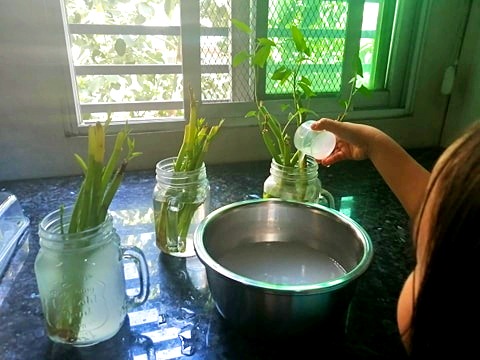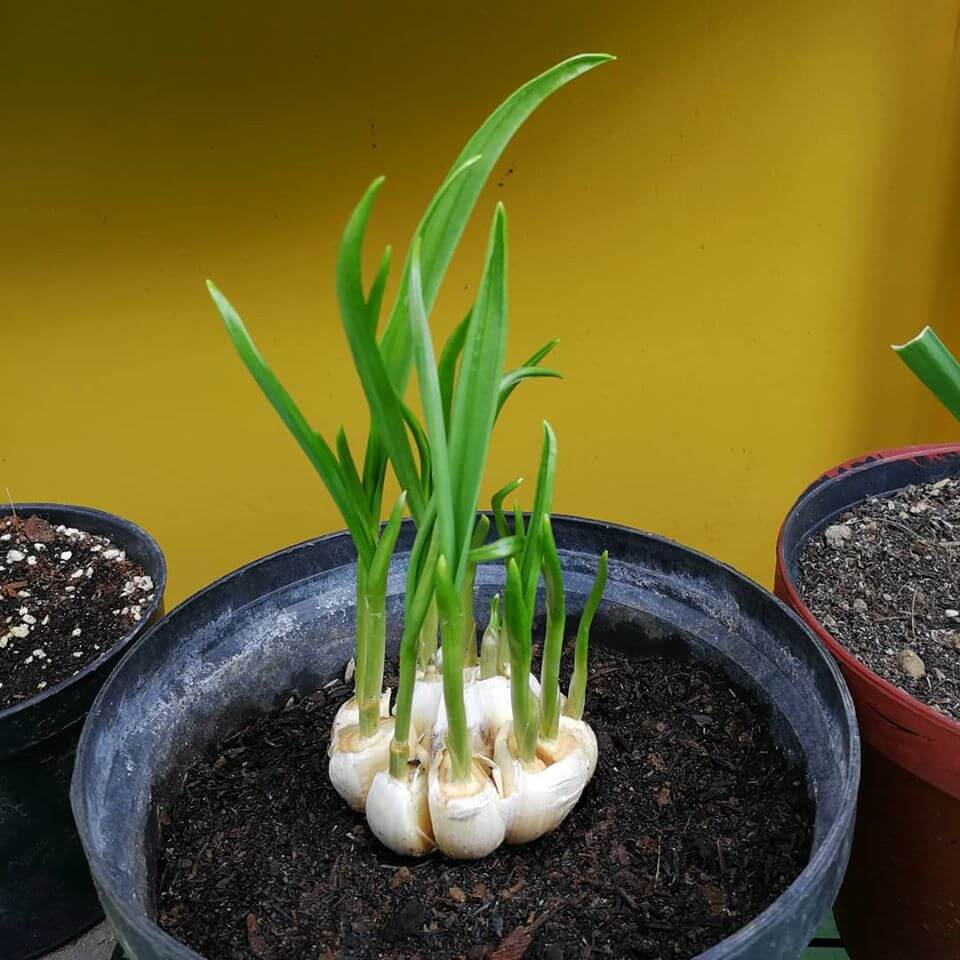Want to grow vegetables at home but don’t want to spend money on seeds? You can do it. Here’s how to grow vegetables from kitchen scrap.
But first, I just wanted to share that I was inspired by the post of my co-mommy blogger and good friend Gracie of Tipid Mommy. She posted about growing kang kong at home.
So, I tried it too. I’ve been quite hesitant for some time about planting because I’ve tried it before and well, it wasn’t successful.
Honestly, I was beginning to think I had a black thumb. But these days, I’ve realized the benefits of growing your foods such as saving money, being more active, eating healthier, and helping the environment.
Here are some common vegetables you can re-grow and practical tips to guide you.
Stems to Re-grow in Water
Celery
Cut the celery and leave 1 to 2″ from the base. Put it in a bowl of water with enough sunlight. Change the water often then when the sprouting leaves, in about a week, transfer it to soil.
Pechay Wombok, Cabbage, Bokchoy
Leave an inch or two of the stump and put in a container with some water. Watch the leaves grow then transfer to soil.
Swamp Cabbage (Kang Kong)
It’s probably the easiest one to grow. This vegetable loves water and the sun so it needs to have at least 4 hours of sun. I just placed ours near the window.

We change the water daily. Also my daughter places some rice wash (hugas bigas) every day . I think the rice water has been helping it grow really well. I was amazed that one batch had leaf sprouts the very next day.
They say it’s better to transfer it to soil but for now, the mason jar is working.
Herbs to re-grow from cuttings
Basil
Cut about 4” of the stem below the leaf node. Get a basil cutting that hasn’t flowered yet.Remove the leaves of the lower part of the cutting, about 2” from the end.
Put it in some water with plenty of sunlight. Change the water every few days. Leave them until the roots sprout grow to about 2 inches, which can take 2-4 weeks.
Then, you can transfer to soil in an area with direct sunlight.
Parsley
Cut a 3-4” portion of the stem then place it in a container filled with 1-2” of water. When they grow roots, you can transfer them to soil.
Bulbs, Stems, and Modified Stems
Garlic
You might notice some cloves sprouting and you can immediately plant them. You could also cut off a small portion of its tip and submerge it in shallow water. Transfer it to soil once you see some sprouts.
By the way, you need seeds to grow garlic cloves.

Image Credit: Be A Hardinera Facebook Page
Onions
Cut the bottom piece of an onion. Poke through some sticks then suspend it in water for a few days to allow the roots to grow. When you can see some roots, transfer it in a pot.
When you can see some sprouts, you can even grow more onions by splicing the onion bottom with leaves and roots and transferring it into another pot.
Water it well. It needs to grow in a sunny area. Remember though that it can take up to 120 days for a bulb to form.
What to do with Vegetable seeds
How to Germinate Seeds
You can germinate vegetable seeds in soil or on a paper towel.
For papel towel germination, place the seeds on a paper towel then spray some water from time to time until they sprout.
How to Collect and Store Vegetable Seeds
For fleshy vegetables such as squash, bottle gourd (upo) and bittermelon (upo), scoop out the seeds from the fully ripe ones. You can place them in envelopes or glass jars and remember to label them.
Remember to keep your seeds cool and dry.
How to Make Your Own Fertilizer
There are also inexpensive ways to make the soil rich and your plants nourished.
Egg shells
There are two ways you can use egg shells as homemade fertilizer. You can make a tea or crush the egg shells then place them directly around your plants.
To make the eggshell tea, add 10 egg shells into 1 gallon of boiling water. Then let them sit in the hot water overnight. You can water your plants with this tea once a week.
Used Coffee grounds
Coffee grounds can help acidify the soil. Simply sprinkle used coffee grounds them around your plants.
Aquarium water
Did you know that water from your tank is rich in nitrogen, potassium, phosphorus, and trace nutrients which plants love?
But don’t use saltwater, very dirty fish water, or water treated with chemicals.
Banana peels
You can put some banana peels into the top soil or bury them in holes around your plants.
Cooking water
Use cooking water with vegetables, eggs, pasta, rice or potatoes to water your plants. The nutrients will go into the soil.
Local Gardening Groups on Facebook
These gardening groups have been really helpful for me now that I’m starting to start my mini-vegetable garden.
Manila Grows Food
Be a Hardinera – Guide to Urban Organic Gardening
Philippine Urban Gardening
Urban/Container/Organic Gardening
Backyard Gardening Group
Urban Vegetable Gardeners
FREE Seeds
While you can always grow vegetables from kitchen scrap, take advantage of the FREE seeds being given by the Department of Agriculture.
If you’re living in Metro Manila, you can contact 8525-7313/8524-0837 to arrange for shipping or pick-up.
Meanwhile, if you live in the provinces, contact the Department of Agriculture regional office or even your local government units to inquire.
So, what do you want to plant?
Enjoyed this post? Share it!
Let’s stay connected!








